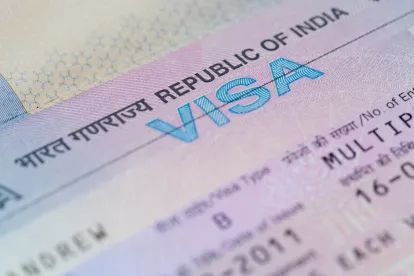It is widely known that India has become a major EB-5 investor market in recent years, as EB-5 is becoming an increasingly popular option for Indian nationals who seek permanent residence in the United States; the fact that there has been a growing number of high-net-worth individuals in India clearly helps to stimulate this demand. Specifically, Indian investors’ share of the EB-5 investor market has grown substantially since 2014, surpassing Vietnam as the second largest EB-5 investor market in fiscal year 2017, although its total market share, five percent, remains small. Invest In The USA (IIUSA) recently published a data report, 2018 EB-5 Investor Market Analysis: India and United Arab Emirates, based on the data supplied by USCIS, Department of State, United Nations, and Capgemini. Some of the highlights from this report are summarized below, along with additional observations:
- Significant Increase in Number of Petitions: A total of 587 I-526 petitions were filed by Indian investors in FY2017, which is almost 600 percent of the total number of petitions filed by Indian investors in 2014. This number remains small given that a total of 12,165 I-526 petitions were filed worldwide in FY2017.
- Significant Increase in Number of Visa Usage: A total of 585 EB-5 visas in FY2018 were used by applicants from India, which is a 236 percent increase from FY 2017. This is the highest year-over-year growth among the top EB-5 investor markets, including China, Vietnam, South Korea, Taiwan, and Brazil. A total of 1,469 EB-5-based immigrant visas have been issued to applicants from India between FY2008 and FY2018, of which a total of 1,115 visas were issued since FY2014. This number remains small given the total number of EB-5-based visas issued each year.
- Significant Increase in Number of High Net Worth Individuals in India: Based on the Asian-Pacific Wealth Report 2018 by Capgemini, India’s high-net-worth-individual (HNWI) population grew by 20 percent from 2016 to approximately 263,000 in 2017, which is the highest among all Asian-Pacific countries. This is likely an important factor that contributes to the growing number of EB-5 investors from India. Despite the significant increase, the total number of HNWI in India remains small, given the large population of India.
- United States as the Second Most Popular Migration Destination for Indian Nationals: According to the data published by Pew Research Center, the United States is the second most popular migration destination for Indian migrants in 2017, just behind United Arab Emirates (UAE). A total of 2,310,000 Indian migrants have immigrated to the United States, which represents nearly 14 percent of the total Indian migrants in 2017.
UAE is another increasingly important EB-5 investor market with a notable number of EB-5 applicants, thanks to its international migrant population, which makes up majority of its population. The importance of this EB-5 investor market will likely be strengthened given its high percentage of migrants from India. The data published in the IIUSA report explains the reasons for recent growth of the UAE market and its potential for further growth. Firstly, there are a large number of HNWIs among the UAE population. While there was a minor decline in the absolute number of HNWI since 2014, Dubai had the world’s fourth highest inflows of HNWI in 2017, with an estimated 2,000 or more HNWIs having migrated to Dubai in that year, according to the IIUSA report, which cited Knight Frank’s Wealth Report 2017. UAE’s population is extremely international, with 88 percent originating from foreign countries. Of the total international migrants in UAE as of 2017, India, Bangladesh, Pakistan, Egypt, Philippines, and Indonesia are the countries of origin that represented most of the migrants, accounting for 84 percent of UAE’s international migrant population and nearly 74 percent of its total population. Migrants from India in particular contributed 40 percent of the total international migrant population in UAE. The data report shows that the migrants from Bangladesh, Pakistan, Egypt, Philippines, and Indonesia, the five countries that accounted for most of UAE’s migrant population behind India, represent the largest number of I-526 filings out of UAE. Given the high percentage of Indian migrants living in UAE, and a growing interest in EB-5 program among Indian investors, it is likely that there is growth potential of the EB-5 investor market in UAE and future opportunities to raise EB-5 capital in this market.
With the growing number of Indian-born EB-5 applicants in recent years, Charles Oppenheim, chief of Visa Control and Reporting Division, U.S. Department of State, indicated at an EB-5 Industry Conference on April 23, 2018, that EB-5 visa backlogs for Indian nationals will likely be introduced no later than June 2019, and likely earlier. With the introduction of the visa backlog/retrogression, Indian-born investors would face unspecified wait times (the specifics will be known once it has been published in the monthly visa bulletin) after the I-526 approval before they can proceed with the conditional green card process, through either adjustment of status within the United States or consular processing outside the United States. This would mean that the Indian investors whose I-526 approvals take place after the introduction of the visa backlog will no longer be able to proceed with their green card process immediately. For those who are currently in the United States on F-1 and H-1B visas, they will need to maintain valid status in the United States or depart from the United States while waiting on their priority date to become current. It remains to be seen how the visa backlog will affect the Indian EB-5 market.



 />i
/>i
